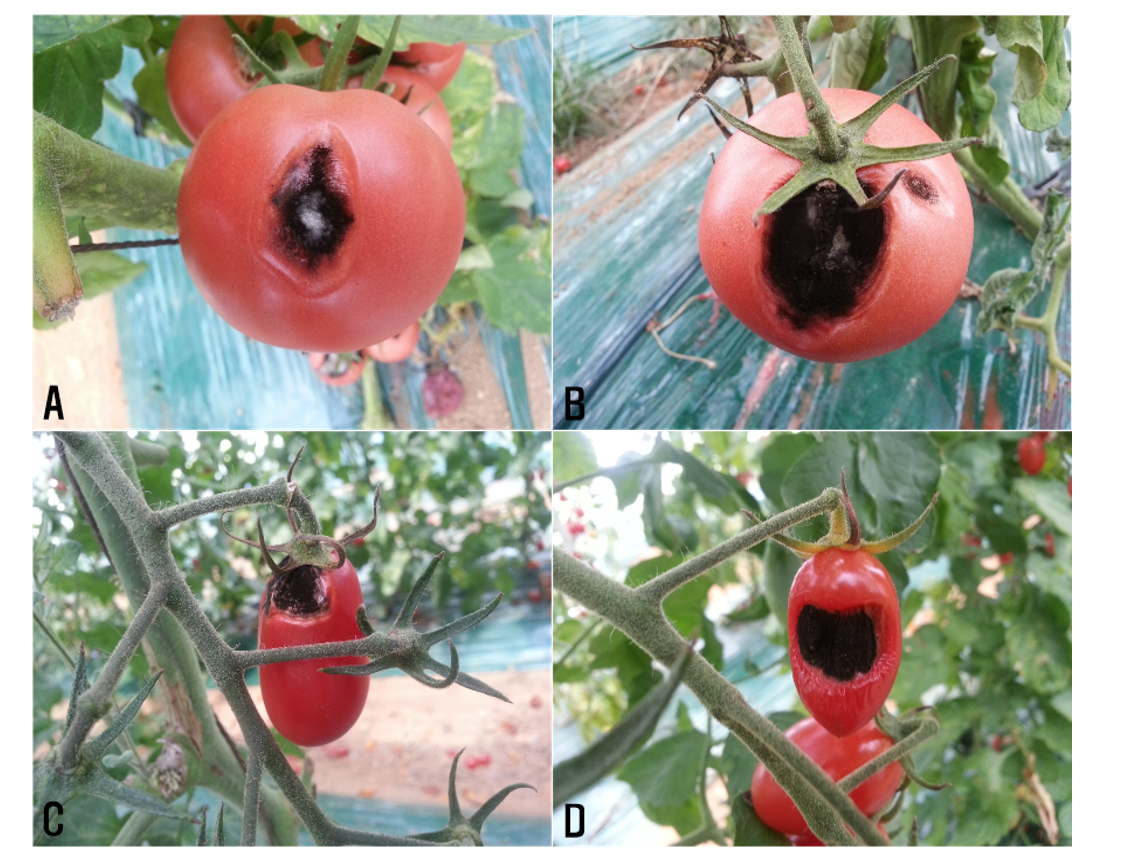Abstract
Black mold was frequently observed on tomatoes grown in a greenhouse in Suwon, Korea in July 2018. The incidence of the disease was 5.0-25.0% (average 12.3%) and 2.0-7.0% (average 3.7%) in the context of tomato and cherry tomato fruits, respectively. Sixteen single-spore isolates of
Figures & Tables

Fig. 1.Symptoms of black mold on fruits of tomatoes observed in the greenhouse. A and B, symptoms produced on tomato fruits; C and D, symptoms produced on cherry tomato fruits.


